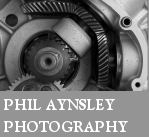


1902 The company made their own frames to carry bought-in engines and other components. The machines were typical of the era, but of excellent quality. Gradually, over the years, they improved technically.
1908 At the late Stanley show they exhibited a lightweight, two-stroke model. It had a 143cc engine, Ruthardt magneto and the option of a drop frame to provide a ladies' model. They were still very conventional in style.
1910 Stanley Show
Victoria Motor and Cycle Co. Ltd. Glasgow.
Among the exhibits of this well-known Scottish firm will be a new 3 H.P. motor-cycle with magneto ignition. We understand that this is a first-class machine in every way, and is priced at a figure which will bring it within the reach of all.
1912 Precision engines were now being used, along with an Armstrong three-speed rear hub.
1914 A Precision V-twin, Villiers two-stroke and a 2hp lightweight were added.
Victoria Motor and Cycle Co., LTD., Dennistoun, Glasgow.
Post-war. They offered a small range using 147cc and 247cc Villiers engines, plus a choice of transmission.
1924 The range was augmented with the addition of four-stroke models using JAP engines.
1925 Engines used were Villiers 147cc, 247cc and 343cc, plus 293cc, 596cc JAP. All had three speeds, but only three had all-chain drive.
1928 The line ran on, little altered, until this year.
Sources: Graces Guide, The Motor Cycle